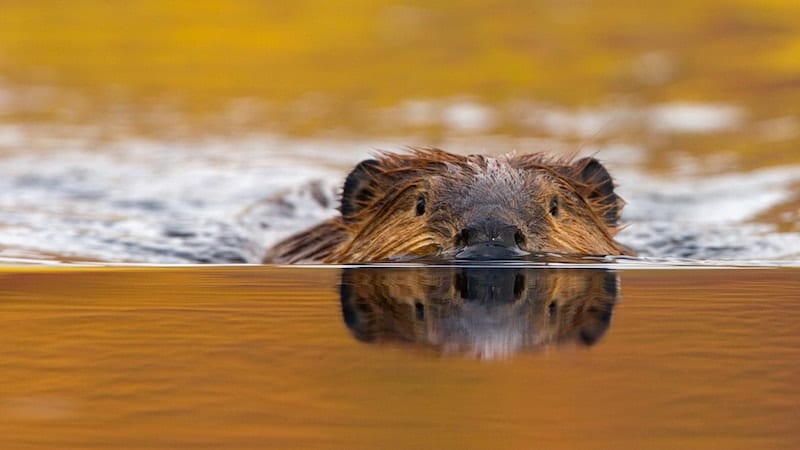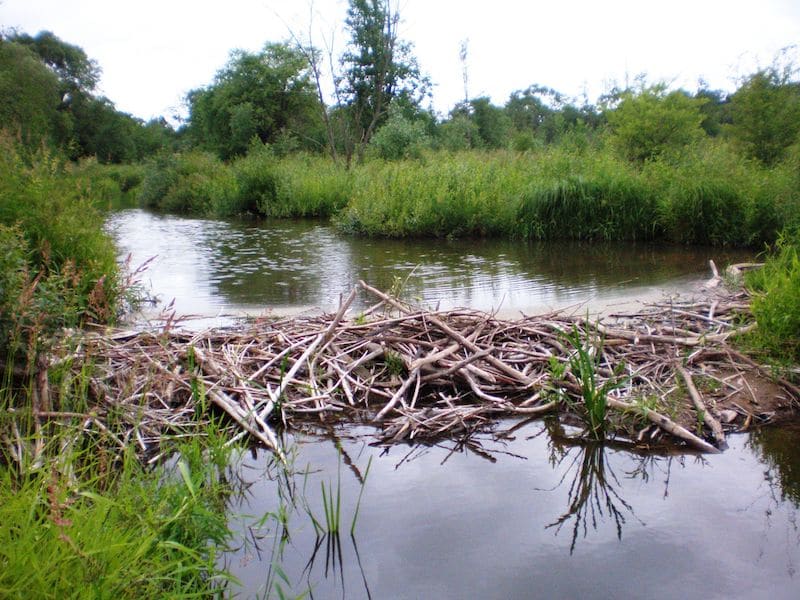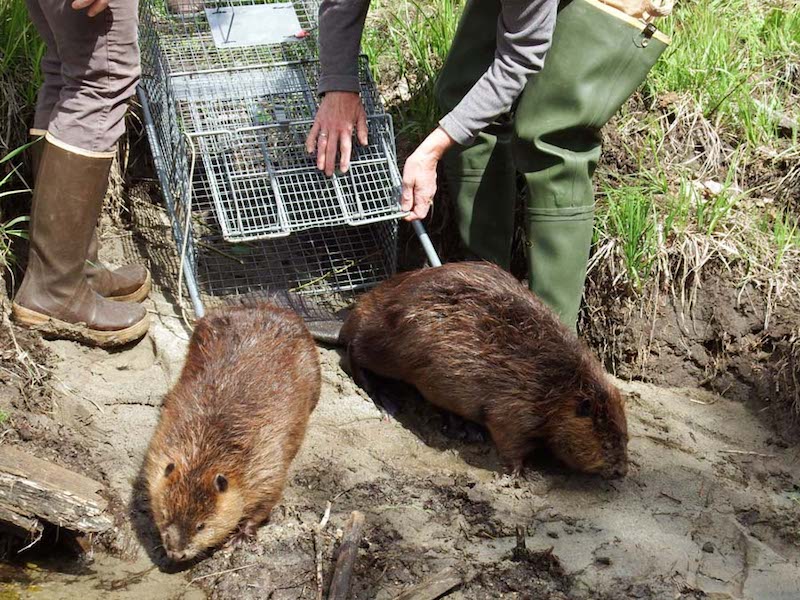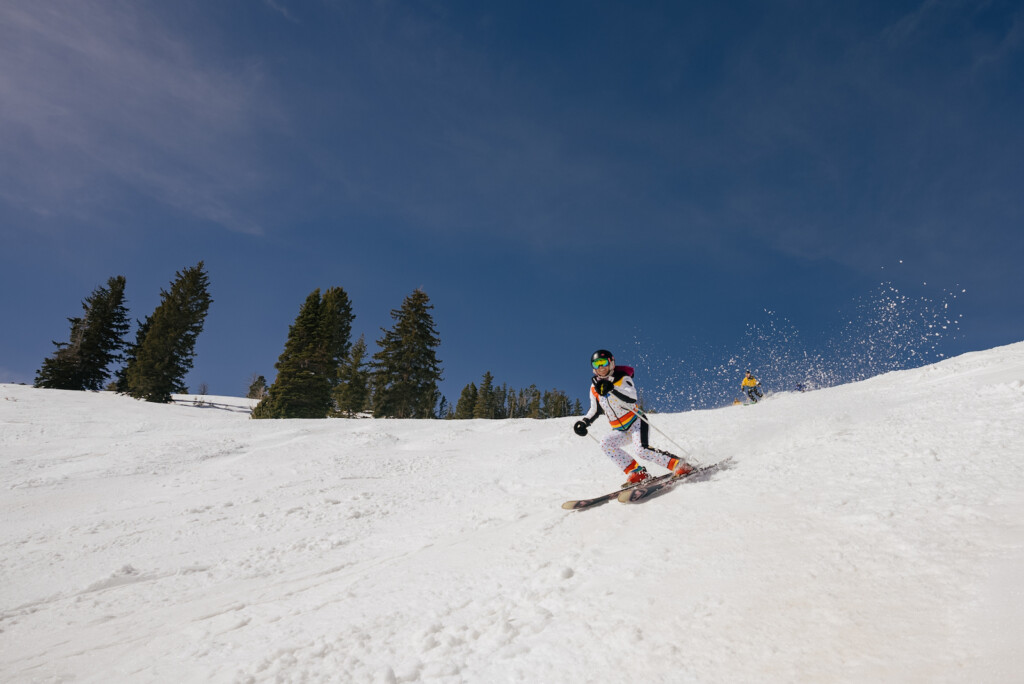
The resounding “Smack!” of a broad tail on tranquil water is how beavers signal to one another that danger lurks nearby.
Beavers confronted their greatest danger in the mid-19th Century, at the time of the early fur trade, when they were hunted and trapped to near-extinction. Highly prized for their water repellency and warmth, beaver skin coats and hats became a fashion trend in America and Europe. With typical frontier hubris, beavers were slaughtered for their pelts until population numbers very nearly fell below sustainable levels.
In Utah, trappers and fur traders such as Peter Skene Ogden, Jim Bridger and hundreds of others continued their assault on these vulnerable creatures from 1825 until the late 1800s. Once considered abundant, North American beaver populations fell drastically as their pelts became the currency that made men wealthy and allowed the British and French-Canadian empires to flourish.
The American beaver (Castor canadensis) is found throughout the contiguous 48 states and nearly all of Utah, with the exception of our most extreme desert regions. These rotund rodents are the largest in North America, with adults weighing between 35 and 70 pounds and averaging two to three feet in length. A group of beavers is known as a colony, and mated pairs are believed to be monogamous, raising 2 to 4 young, known as kits, each year.
In 1899, the Utah Legislature made it illegal to harvest beaver in the state. When populations rebounded in the first half of the 20th Century, trapping resumed in 1974 and continues to this day, with an unlimited harvest from October to April, but with site restrictions to ensure balanced population numbers.

As nature’s builders, beavers are skilled architects, constructing dams, lodges and levees that, according to the Utah Division of Wildlife Resources, “contribute to a healthier, more natural mountain ecosystem. Beaver-dammed water stays up on the mountain longer and is released more slowly downstream, rather than as gushing floods. The expanded water table also fosters new vegetative growth and riparian areas.”
Beaver populations are vital to the sustainability of ecological systems and watershed restoration, providing food and water for a host of other creatures. For these reasons, beavers are used by the state as tools for the restoration of degraded riparian habitats and the subsequent reintroduction of native fishes and other wildlife.
On the other hand, beavers can create conflicts with human enterprises when their industrious activities result in stream alteration, culvert damming, tree cutting and flooding that can interfere with transportation and commerce, or result in private property damage. In these instances, beaver activities and populations are controlled through culling and relocation.

Although beavers still occupy much of their historic range in the Beehive State, Utah’s 2010-2020 Beaver Management Plan sought to reintroduce thriving beaver colonies to areas of the state that were assessed as viable habitat, sometimes returning them to areas they once rightfully occupied before being displaced by human activity.
Most of us were taught in junior high that the Mormon Pioneers “made the desert blossom like a rose.” In reality, the valleys of the west were rich in wet meadows fed by perennial streams from the surrounding canyons upon the Pioneers’ arrival. These shallow water habitats were brimming with aquatic plants and teeming with wildlife, especially beaver, whose dams kept these oases green year-round.
It was after settlers drained these marshlands for agriculture and industry that the land became the dry and desiccated areas we see today. Later, when these places were developed, the people took credit for reclaiming a desert they created themselves.
Wildlife and wetlands restoration expert, Thomas Biebighauser, has worked on more than 6000 projects worldwide, including the restoration of wetlands and aquatic habitat at Boulder Mountain Guest Ranch near Boulder, Utah.
“We underestimate the number of wetlands that have been drained on the landscape,” Biebighauser says. “In the research that I’ve done, over 40 percent of the natural wetlands in Utah were drained, and they were drained for so many different reasons.”
By digging ditches, land was drained for mining, grazing and irrigation. Once drained, the land could be used for growing hay and other crops, and farmers didn’t have to worry about cattle sinking into the marshy bogs. The result was the loss of a diverse and vital habitat and the wildlife that lived there.
In undertaking his work at Boulder Mountain, Biebighauser began by finding natural springs at the base of the mountain, then filling ditches that were dug decades ago to drain the wetlands, or “swamps,” as they were called back then.
“We can restore the landscape and the wetlands and the wildlife that is native to the area will come back,” Biebighauser explains. “We’re taking action to encourage beavers to build their dams. When beavers build dams, they delay the runoff of water from the springs. Much of it will soak into the ground and supply wet meadows with water. We’re restoring wet meadows and the response is phenomenal.”
Thanks to Thomas Biebighauser, these restoration efforts, along with help from beavers, has created new habitat for ducks, geese, herons, Sandhill cranes, bald eagles, boreal toads, cutthroat trout, blue head suckers, and a host of other species that had been exiled from their native wetland homes by humans. It also creates renewed forage for livestock.
Beaver reintroduction sites and source populations are carefully considered by the Division of Wildlife Resources, along with private water rights and the potential for beaver-human conflict. Also, because beavers are herbivores, all areas must have adequate vegetation to support a beaver colony.
Objective 1 of the management plan is “… to improve riparian habitats, associated streams and wetlands in as many suitable tributaries as is feasible through translocating beaver into unoccupied suitable habitat on public and/or private land.” Once reestablished, colonies are carefully monitored to mitigate the possibility of damage and to prevent the spread of aquatic diseases from one locale to another.
Utah’s Beaver Management Plan, combined with wise conservation and restoration efforts like those at Boulder Mountain, will ensure that these ambitious architects of the animal kingdom can maintain their rightful place in nature as the best dam rodents anywhere! U
You can view Utah Stories’ interview with Thomas Biebighauser here.






